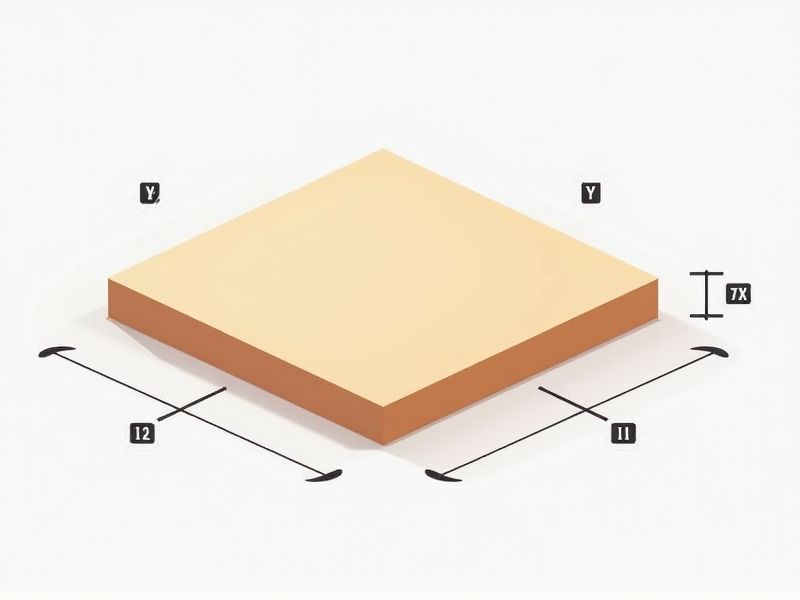
The standard dimensions of a gymnastics floor used in official competitions are 12 meters by 12 meters (approximately 39.4 feet by 39.4 feet). This square area provides athletes ample space to perform routines that include tumbling, jumps, and dance elements safely. The floor itself is typically sprung or cushioned to help absorb impact and reduce injury risk. Adhering to these dimensions ensures consistency and fairness for gymnasts competing at various levels.
Square Shape
The standard size of a competitive gymnastics floor is 12 meters by 12 meters, forming a perfect square. This area provides athletes ample space to perform intricate routines, including tumbling, dance elements, and acrobatic skills. The floor's surface is typically composed of a foam layer covered with carpet to enhance grip and provide cushioning. Ensuring that your routines are executed well within this square can significantly influence scoring, emphasizing the importance of precision and spatial awareness.
12X12 Meters
The standard dimensions for a gymnastics floor exercise are 12 meters by 12 meters, providing a defined space for athletes to showcase their skills. This area allows gymnasts to perform routines that include acrobatics, dance elements, and tumbling passes while ensuring safety and precision. Gymnasts typically have a time limit of 70 seconds to execute their routines, emphasizing both creativity and technical proficiency. Understanding the specific size and time constraints of the floor can significantly enhance your training and performance.
Safety Border
The safety border in gymnastics floors is designed to enhance the security of gymnasts during performances, with measurements typically extending 1 meter beyond the exercise area. This cushioned perimeter, often made from high-density foam, helps to absorb impact, reducing the risk of injury. Many competitions, including the Olympic Games, incorporate these safety borders to ensure athlete safety, reflecting the importance of protective measures in gymnastics. You can enhance your training by familiarizing yourself with these standards to ensure a safe environment during practice.
Padded Surface
A standard gymnastics floor must possess a padded surface that typically measures 12 meters by 12 meters, providing ample space for routines. The padding should be approximately 10 centimeters thick to minimize the risk of injury during high-impact landings. This surface is often made of foam and covered with a durable mat material to ensure grip and comfort. Ensuring your equipment adheres to these specifications is vital for safety and effective training in gymnastics.
Wooden Or Sprung Construction
Gymnastic floors typically feature a wooden or sprung construction to enhance performance and safety. Sprung floors comprise multiple layers that provide cushioning, effectively absorbing impact during high-intensity routines. Wooden floors, generally made from maple or birch, offer a stable surface with excellent resilience and durability, essential for gymnasts executing complex maneuvers. A standard competition floor measures 12 meters by 12 meters, ensuring ample space for athletes to perform their routines effectively.
Absorbs Impact
The gymnastic floor mat, designed to absorb impact, plays a crucial role in athlete safety and performance. Typically, these mats consist of multiple layers of foam, allowing for excellent shock absorption, which helps reduce the risk of injuries during high-impact landing. With a thickness ranging from 20 to 30 centimeters, they provide optimal cushioning for gymnasts performing a variety of routines. Your choice of mat can significantly influence your training quality, providing the necessary support for flips, jumps, and tumbles.
Non-Slip Material
A gymnastic floor must utilize non-slip materials to ensure safety and stability for athletes during performances. High-quality foam and specialized vinyl surfaces offer optimal grip, minimizing the risk of injuries from slips or falls. In professional settings, maintaining the floor's integrity through regular cleaning and inspection is crucial, with a recommended replacement cycle every 3 to 5 years. Your choice of flooring can significantly impact both training efficacy and competition outcomes, showcasing the importance of selecting the right materials.
Marked Boundaries
The standard gymnastic floor measures 12 by 12 meters, marked with clear boundaries to define the competition area. These precise markings help gymnasts maintain spatial awareness during their routines, ensuring that they perform within the designated space. Each corner of the mat is equipped with a tape line, creating a visual guide for executing complex movements and landings. Maintaining awareness of these boundaries is crucial for achieving optimal score outcomes and safe performance.
Uniform Thickness
The standard thickness for a gymnastics floor typically ranges from 3 to 5 centimeters, ensuring uniformity across the entire surface. This consistent thickness is crucial for providing adequate shock absorption, reducing the risk of injury during routines that involve jumps and landings. Most competitive gymnastics floors are made from high-density foam wrapped in a durable fabric, creating a stable yet forgiving environment. When selecting a gymnastic floor for practice or competition, prioritize options that maintain this uniform thickness to enhance performance and safety.
Meets Fig Standards
The standard gymnastic floor measures 12 meters by 12 meters and is designed to meet the Federation Internationale de Gymnastique (FIG) regulations. It features a resilient surface that significantly reduces impact and enhances performance for athletes. Typically, the floor is constructed with a springy material to support a variety of tumbling and acrobatic routines while providing optimal grip. Ensuring compliance with FIG standards guarantees that gymnasts can perform at their best in a safe and competitive environment.
